The natural world is full of astonishing phenomena, but few are as captivating as bioluminescence and fluorescence in animals. While glowing creatures like fireflies and deep-sea fish might immediately come to mind, certain snake species also possess this remarkable ability to emit or reflect light in low-light conditions. These serpents, scattered across different continents and habitats, have developed unique mechanisms that make them appear to glow in darkness. This fascinating adaptation serves various ecological purposes, from attracting prey to warning predators. Join us as we explore eight extraordinary snake species that seem to defy darkness with their luminous qualities, illuminating the mysterious world of nocturnal reptiles and the science behind their glow.
The Science Behind Glowing Snakes
When discussing snakes that “glow in the dark,” it’s important to distinguish between true bioluminescence and biofluorescence. True bioluminescence involves organisms producing their own light through chemical reactions, which is extremely rare in snakes. Biofluorescence, the more common phenomenon, occurs when animals absorb light of one wavelength and re-emit it at another, typically appearing as a neon glow under ultraviolet light. Most “glowing” snakes exhibit this fluorescence rather than producing light themselves. This adaptation appears to have evolved independently in several snake lineages, suggesting its significant evolutionary advantage. Scientists believe these glowing properties may aid in species recognition, hunting, or even deterring predators in low-light environments where many of these species are active.
Burrowing Asp (Atractaspis)
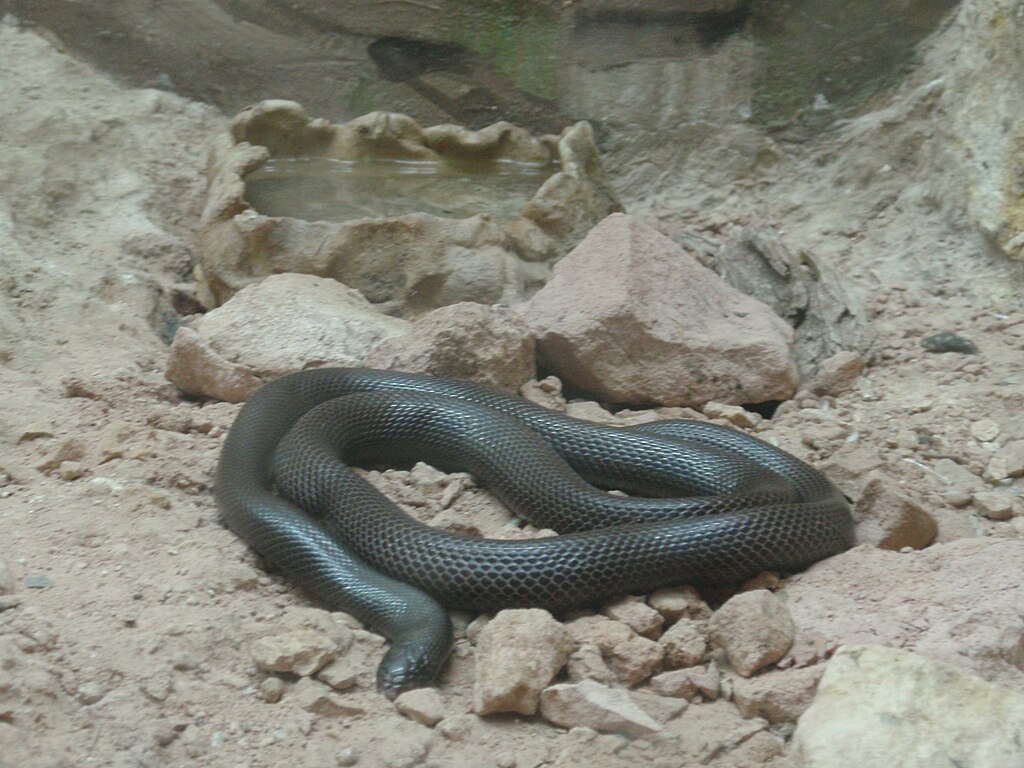
The Burrowing Asp, found across parts of Africa and the Middle East, possesses a remarkable fluorescent quality that makes it appear to glow a brilliant green under ultraviolet light. This fossorial (burrowing) venomous snake spends most of its life underground, emerging primarily at night to hunt. Researchers believe its fluorescent properties may help these solitary creatures locate potential mates in their dark subterranean habitats. The snake’s venom delivery system is equally unique—instead of striking forward like most venomous snakes, it can stab sideways with its fangs while its mouth remains closed, earning it the alternative name “side-stabbing snake.” This combination of deadly venom and nocturnal glowing makes the Burrowing Asp one of Africa’s most fascinating yet overlooked serpent species.
California Nightsnake (Hypsiglena ochrorhyncha)
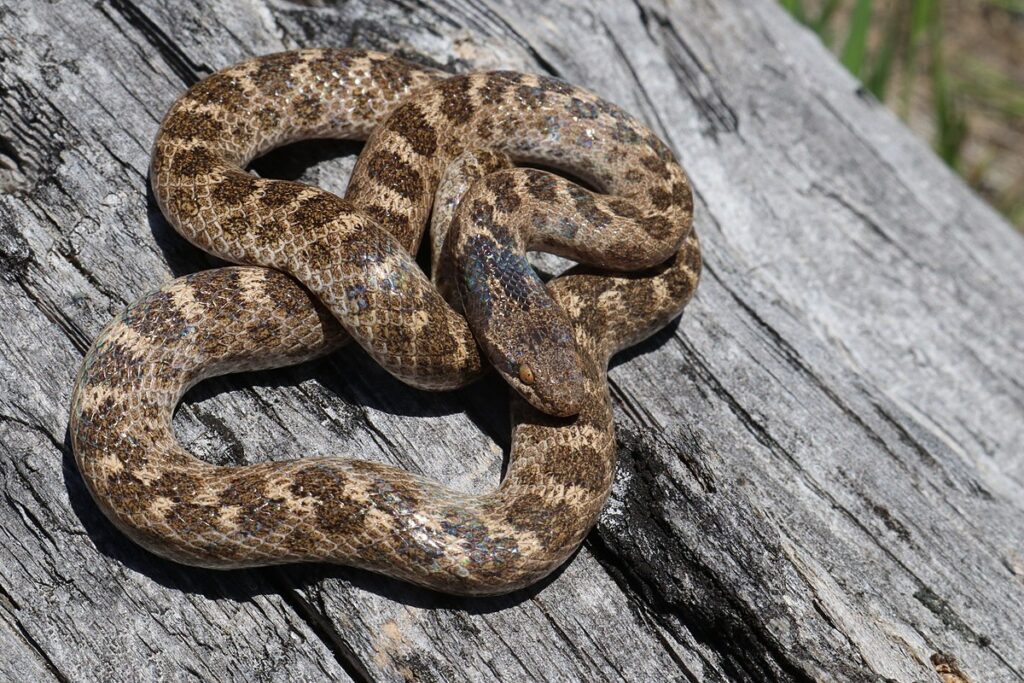
The California Nightsnake exhibits a subtle yet distinct biofluorescence under ultraviolet light, with its scales emitting a soft bluish-green glow. This small, non-venomous snake is native to western North America, including parts of California, Oregon, and neighboring regions. As its name suggests, the California Nightsnake is nocturnal, hunting primarily after sunset when its fluorescent properties would be most effective in the twilight hours. Their diet consists mainly of small lizards and amphibians, and scientists theorize that their subtle glow might help them navigate in the dim light of dawn and dusk. Remarkably, different populations of this species show variations in the intensity and pattern of their fluorescence, suggesting possible regional adaptations to specific environmental conditions.
Banana Snake (Boiga dendrophila)
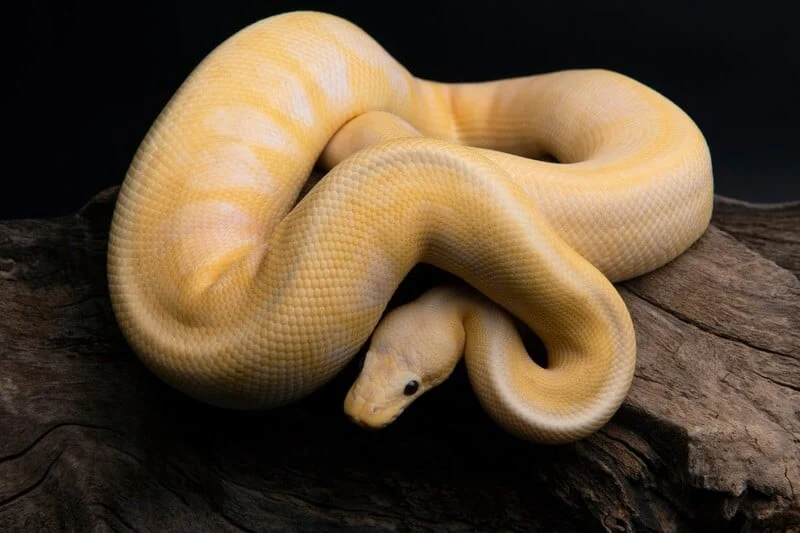
Despite its playful name, the Banana Snake—also known as the Mangrove Snake or Gold-ringed Cat Snake—is a seriously impressive serpent that exhibits biofluorescence. Native to Southeast Asia, this arboreal species appears dramatically different under ultraviolet light, with its characteristic yellow bands glowing an intense neon color against its dark body. The Banana Snake inhabits mangrove forests and other humid environments, where it hunts at night for birds, lizards, and small mammals. Its glowing bands may serve as a form of aposematic coloration, warning potential predators of its mildly venomous bite. Though not typically dangerous to humans, the snake’s venom is potent enough to subdue its prey, and the fluorescent warning signals help ensure this beautiful predator is left undisturbed in its nocturnal hunts.
Desert Horned Viper (Cerastes cerastes)
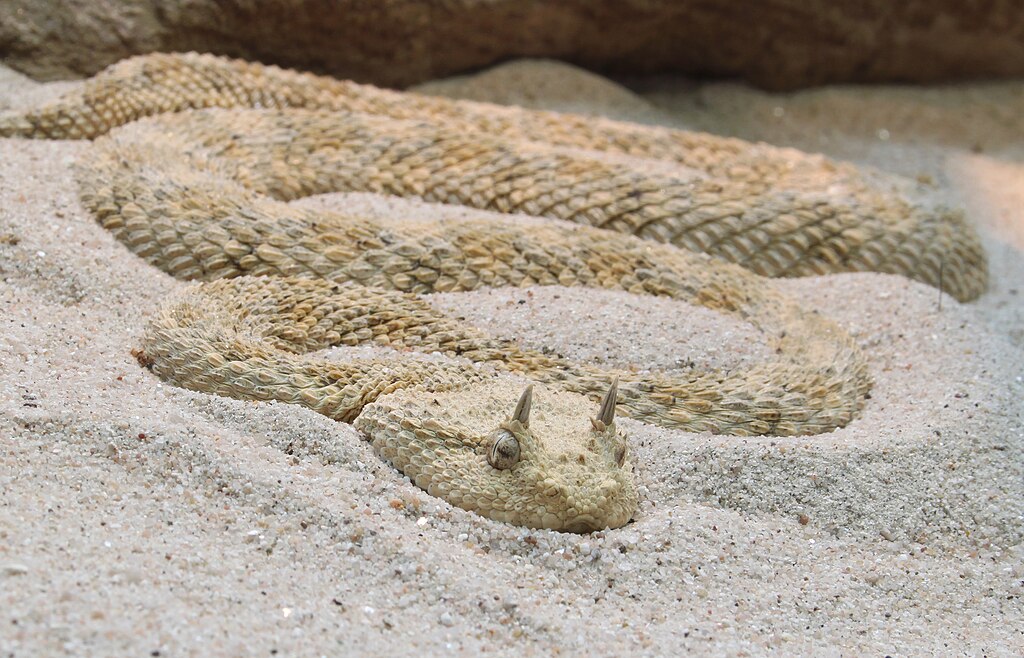
The Desert Horned Viper, instantly recognizable by the horn-like scales above its eyes, harbors a secret that only becomes apparent in darkness—its scales fluoresce under ultraviolet light, creating an eerie glow across its body. This adaptation may serve a crucial purpose in the harsh desert environments of North Africa and the Middle East, where this venomous snake makes its home. The fluorescence might help regulate the snake’s temperature by reflecting certain wavelengths of light or aid in cryptic communication with other vipers. The Desert Horned Viper is primarily nocturnal, burying itself in sand during the day and emerging at night to hunt, when its fluorescent properties would be most active under moonlight. This remarkable adaptation, combined with its sidewinding locomotion and ambush hunting strategy, makes it one of the desert’s most perfectly adapted predators.
Emerald Tree Boa (Corallus caninus)
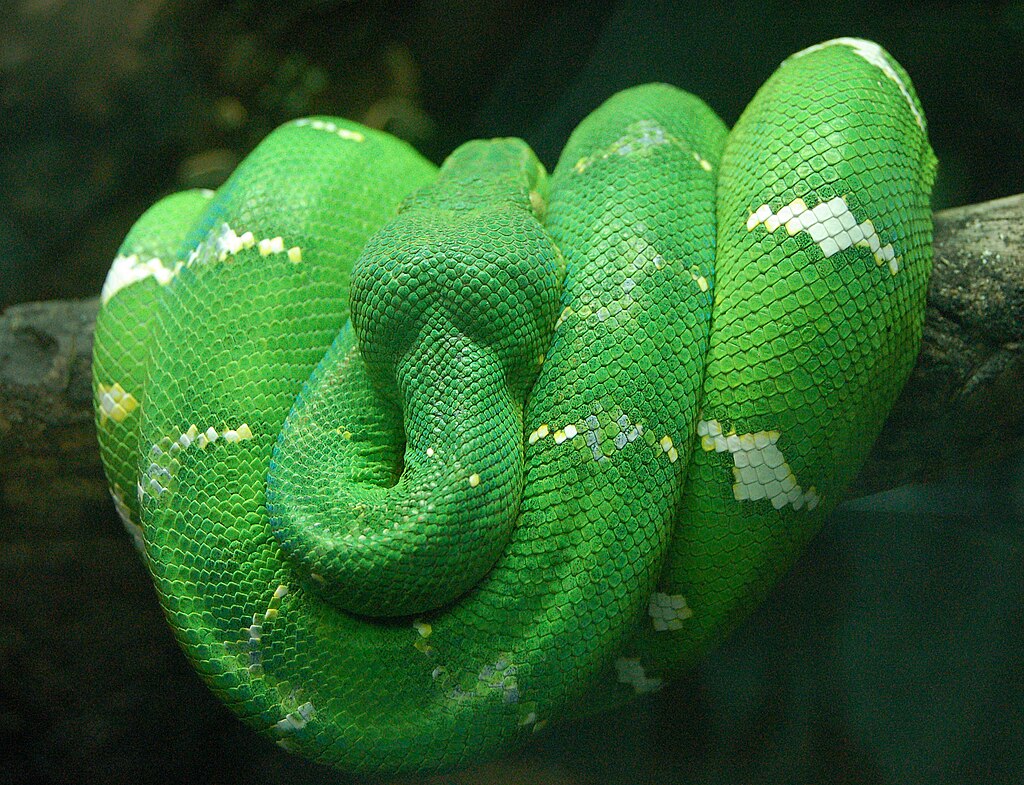
The Emerald Tree Boa, already stunning with its brilliant green coloration in daylight, reveals an unexpected quality in darkness—under ultraviolet light, its scales emit a yellowish-green fluorescence that appears to make the snake glow. Native to the rainforests of South America, this non-venomous constrictor spends almost its entire life in trees, rarely descending to the forest floor. Scientists speculate that the boa’s fluorescent properties may help it blend into the fluorescent environment of the rainforest, where many plants also exhibit biofluorescence. This perfect camouflage would allow the snake to remain invisible to both prey and predators, even when illuminated by the natural ultraviolet light that filters through the canopy. The intensity of the fluorescence varies between individuals and may be influenced by diet, age, and specific habitat conditions.
Pacific Tree Boa (Candoia bibroni)
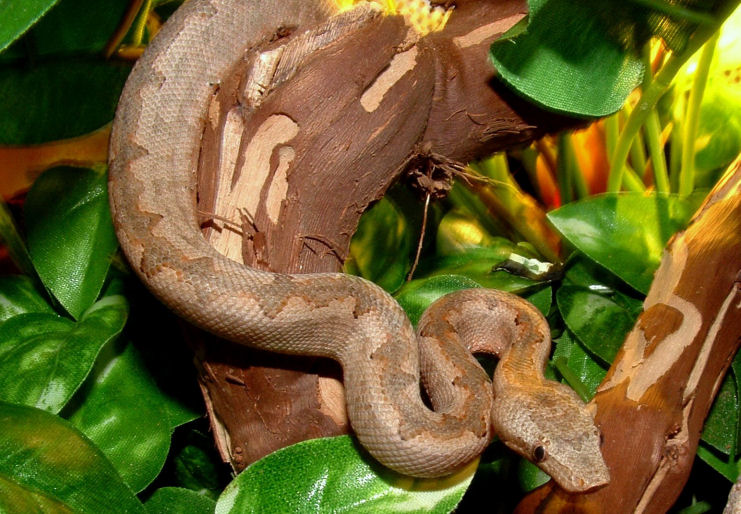
The Pacific Tree Boa, found across various islands in the South Pacific, including Fiji and the Solomon Islands, demonstrates a fascinating fluorescent quality when exposed to ultraviolet light. This medium-sized constrictor emits a reddish-orange glow that contrasts dramatically with its typically brown or gray appearance in normal light. Living primarily in tropical forests, this nocturnal hunter relies on stealth and ambush tactics to capture its prey of birds, lizards, and small mammals. The snake’s fluorescence may serve as intraspecific signaling, helping males and females locate each other during breeding season in the dense forest understory where visibility is limited. Remarkably, researchers have noted that the intensity of fluorescence appears to be linked to the snake’s specific island habitat, suggesting localized evolutionary adaptations across its fragmented range.
Western Diamondback Rattlesnake (Crotalus atrox)
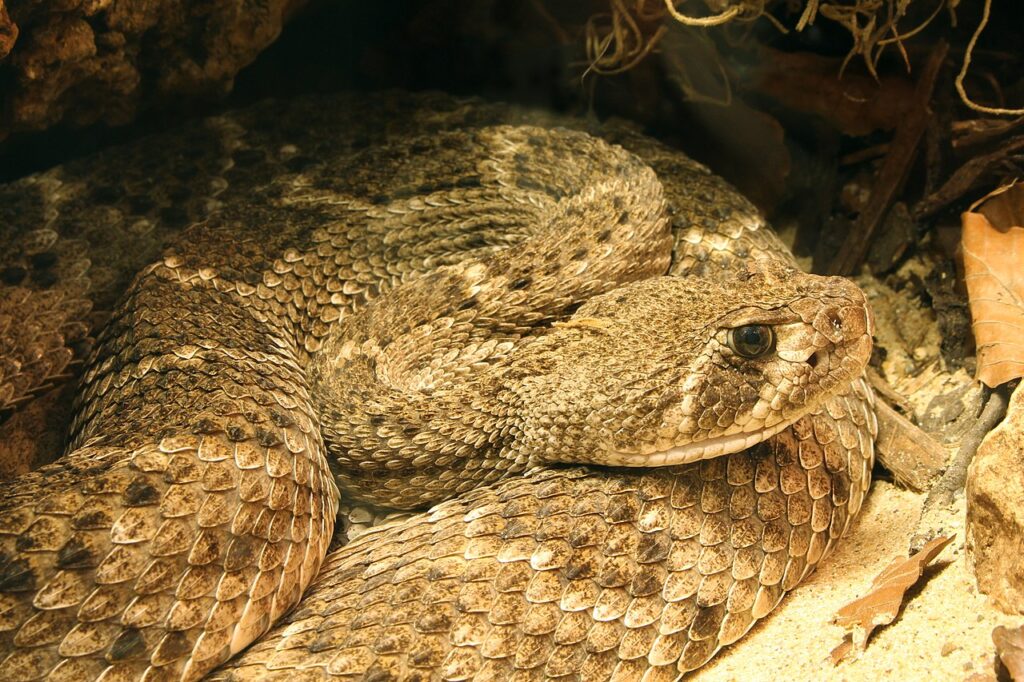
The Western Diamondback Rattlesnake, one of North America’s most iconic venomous serpents, harbors a surprising secret—its scales fluoresce under ultraviolet light, creating a subtle but distinct glow that outlines its diamond pattern. This heavy-bodied pit viper inhabits arid regions across the southwestern United States and northern Mexico, where it hunts primarily during twilight and nighttime hours. The fluorescence may enhance the snake’s camouflage in moonlit conditions or, conversely, serve as a warning signal to nocturnal predators that can see in the ultraviolet spectrum. Interestingly, the rattlesnake’s rattle also shows fluorescent properties, potentially amplifying its warning display when vibrated. This adaptation represents yet another sophisticated evolutionary strategy employed by this already formidable predator to navigate its complex ecological relationships in the desert ecosystem.
Madagascar Tree Boa (Sanzinia madagascariensis)
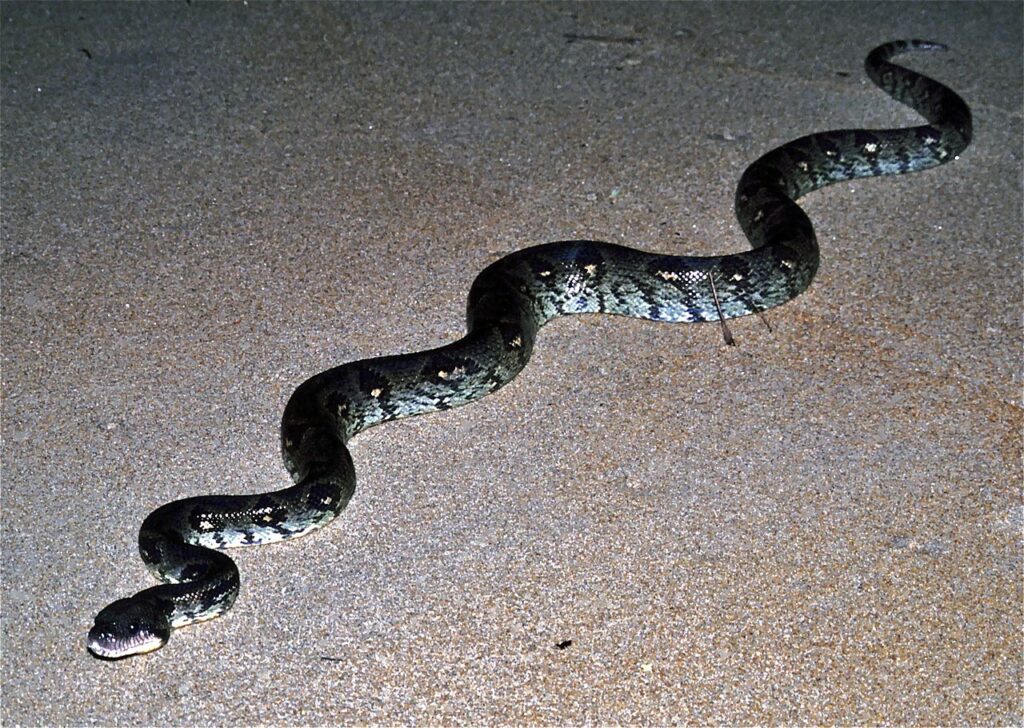
The Madagascar Tree Boa exhibits one of the most vivid fluorescent displays of any snake species, glowing an intense green under ultraviolet light. Endemic to the island of Madagascar, this non-venomous constrictor inhabits tropical forests where it spends much of its time in trees hunting for birds and small mammals. The snake’s fluorescence may serve as a form of camouflage, helping it blend with the fluorescent mosses and lichens that grow on tree trunks in its humid forest habitat. Researchers have observed that juvenile Madagascar Tree Boas often show more intense fluorescence than adults, suggesting the trait may have particular importance during certain life stages. This remarkable adaptation highlights the unique evolutionary path taken by Madagascar’s fauna, which has developed in isolation from mainland Africa for millions of years.
How Scientists Discovered Snake Fluorescence
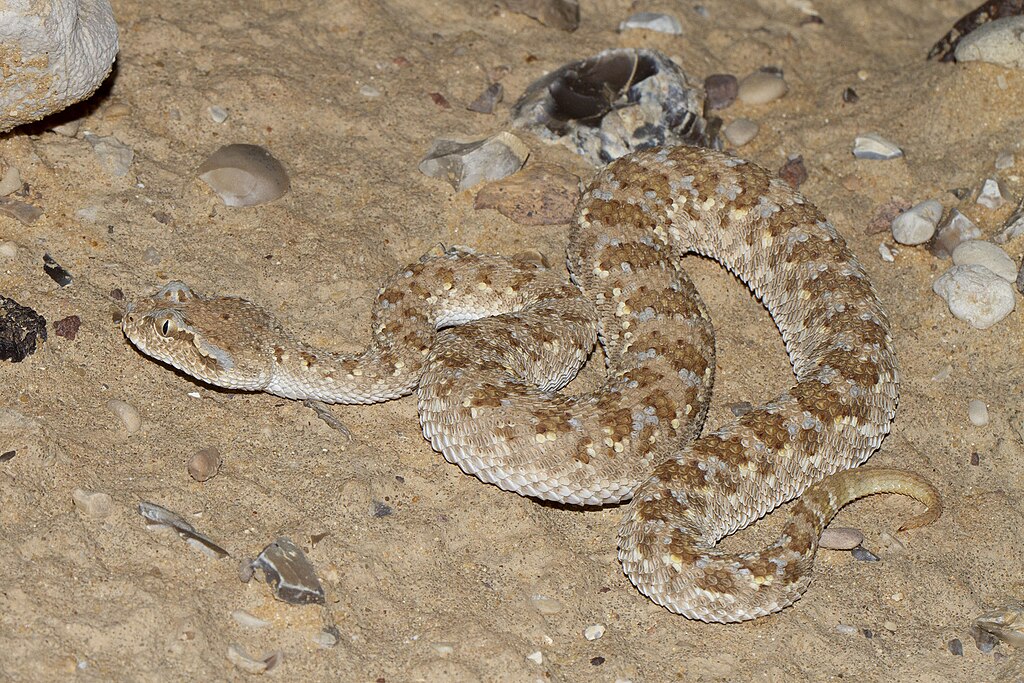
The discovery of widespread fluorescence in snakes is relatively recent, with breakthroughs occurring only in the past two decades. The phenomenon was first documented comprehensively in 2017 when researchers at the American Museum of Natural History examined over 240 snake species under ultraviolet light, finding that many exhibited some degree of fluorescence. This discovery came somewhat accidentally, as scientists were initially investigating other reptile adaptations when they noted the unexpected glowing response in certain specimens. The research required specialized photography equipment and controlled lighting conditions to properly document the subtle fluorescence that would otherwise go unnoticed by the human eye. Since this initial discovery, field herpetologists have developed ultraviolet flashlight techniques for nighttime surveys, revealing that snake fluorescence is far more common and varied than previously believed, opening an entirely new dimension to our understanding of serpent biology.
Evolutionary Advantages of Glowing
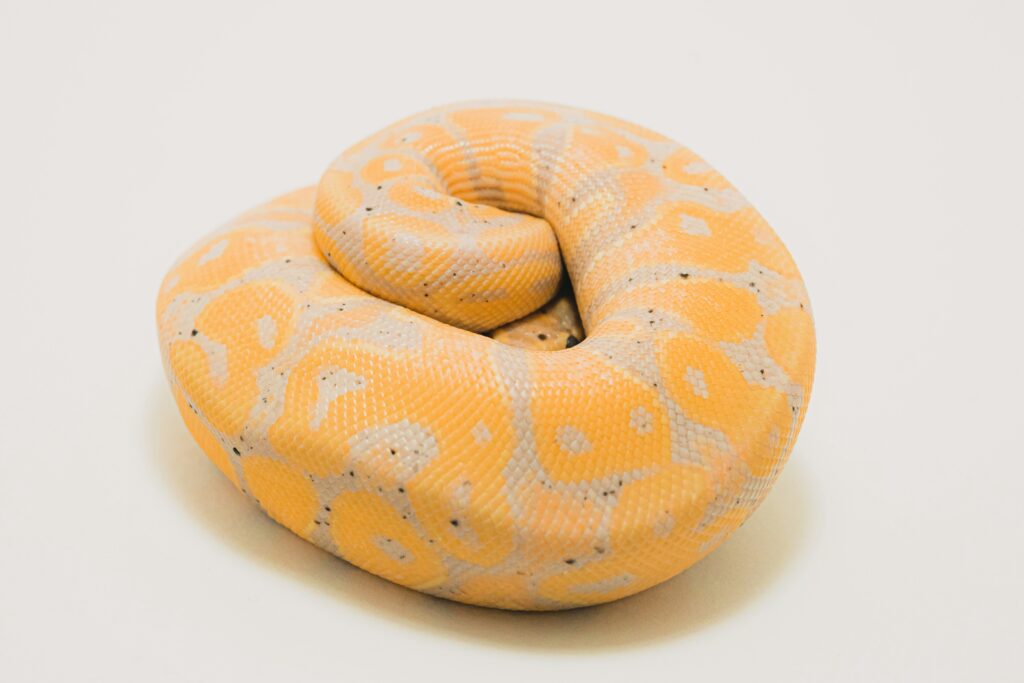
The evolutionary advantages of fluorescence in snakes remain the subject of ongoing scientific debate, with several compelling theories emerging from recent research. One prominent hypothesis suggests that fluorescence enhances species recognition in low-light conditions, allowing snakes to identify potential mates while avoiding similar-looking but incompatible species. Another theory proposes that fluorescent patterns may serve as disruptive camouflage, breaking up the snake’s outline when viewed by predators that can perceive ultraviolet light. For hunting species, the glow might function as a lure, attracting insects or other prey that are naturally drawn to bioluminescent organisms. Some evidence also indicates that fluorescence may play a role in thermoregulation, with fluorescent compounds potentially helping snakes absorb or reflect specific wavelengths of light to maintain optimal body temperature. Most likely, fluorescence serves multiple adaptive purposes that vary among species based on their specific ecological niches.
Photographing Fluorescent Snakes

Capturing the ethereal glow of fluorescent snakes presents unique challenges that require specialized equipment and techniques. Wildlife photographers typically use high-quality ultraviolet light sources with wavelengths between 365-395nm, coupled with filters that block reflected UV light while allowing the fluorescent emissions to pass through to the camera sensor. Long exposure times are often necessary, requiring extremely stable tripods and remote shutter releases to prevent motion blur. The most successful photographs typically combine ambient light with controlled UV illumination to show both the snake’s normal appearance and its fluorescent properties simultaneously. Ethical considerations are paramount in this specialized photography, as prolonged exposure to intense ultraviolet light could potentially harm the snake’s sensitive eyes and skin. Professional photographers in this field often work alongside herpetologists to ensure their techniques minimize stress to the animals while documenting this fascinating natural phenomenon.
Conclusion: The Future of Fluorescent Snake Research

The discovery of fluorescence across multiple snake lineages has opened exciting new avenues for herpetological research, promising deeper insights into snake ecology, behavior, and evolution. As imaging technology advances, scientists anticipate identifying more species with fluorescent properties and developing a more nuanced understanding of how these adaptations function in natural environments. Particular research interest lies in determining whether snakes can perceive their own fluorescence and how this might influence their behavior. Conservation implications also emerge, as the specific wavelengths that trigger fluorescence could be affected by changing light conditions due to habitat destruction or light pollution. The glowing serpents highlighted in this article represent just the beginning of our understanding of this remarkable adaptation. As we continue to unravel the mysteries of snake fluorescence, these magnificent creatures remind us that nature’s adaptations are often more spectacular and complex than we initially perceive—sometimes requiring just a different light to reveal their hidden wonders.




